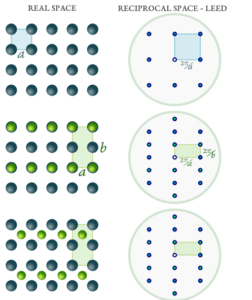In the realm of scientific exploration, a breakthrough has been achieved in the quest to harness low-energy electrons efficiently. This discovery marks a significant advancement in the field, promising a range of potential applications. Researchers have successfully identified a potent source of these electrons, opening up new avenues for innovation and technological progress.

Scientists have discovered a new source of low-energy electrons that could be used for a variety of applications in biology and materials science. The source, which was developed by researchers at the University of Freiburg in Germany, uses UV light to create solvated dielectrons in tiny ammonia droplets. The dielectrons then decay, emitting low-energy electrons.
Pioneering Exploration
The pursuit of low-energy electrons, with their unique properties and potential benefits, has been a focal point for scientists and researchers. In a significant stride forward, a team of experts has uncovered a highly effective source of these electrons, paving the way for groundbreaking advancements in various scientific domains.
The Path to Discovery
The journey to this discovery involved meticulous research and experimentation. Scientists engaged in rigorous investigation and testing to pinpoint a source capable of generating and harnessing low-energy electrons with precision and consistency. The result is a breakthrough that holds promise for diverse applications, from energy storage to medical imaging and beyond.
A Multitude of Possibilities
The newfound source of low-energy electrons opens a world of possibilities across multiple sectors. In the realm of energy, this advancement could lead to more efficient energy storage solutions, offering the potential to revolutionize how we capture, store, and utilize power. Moreover, in fields such as materials science and medical imaging, the discovery may facilitate enhanced techniques and tools that drive progress in research and diagnostics.
Collaboration and Innovation
The success of this discovery is a testament to the power of collaboration and interdisciplinary research. Scientists from various backgrounds joined forces to unravel the mysteries of low-energy electrons and unlock their potential. Such collaborative efforts exemplify the spirit of scientific exploration and underscore the importance of shared knowledge in pushing the boundaries of human understanding.
Charting the Future
As the scientific community continues to delve deeper into the implications of this breakthrough, the path forward is filled with excitement and anticipation. The newfound source of low-energy electrons has ignited a spark of innovation, driving researchers to explore novel applications and possibilities that could reshape industries and enhance our understanding of the natural world.
The unveiling of an effective source of low-energy electrons marks a pivotal moment in scientific progress. This discovery not only showcases the ingenuity and dedication of researchers but also promises to usher in a new era of technological advancements. The discovery of a new source of low-energy electrons is a significant advance for biology and materials science. The new source is much more efficient and stable than other sources, and it could be used for a variety of applications. The source has the potential to revolutionize the way we study and modify biological molecules and materials. As scientists and innovators harness the potential of these electrons across various fields, the future holds the promise of transformative breakthroughs that will shape the world in remarkable ways.
